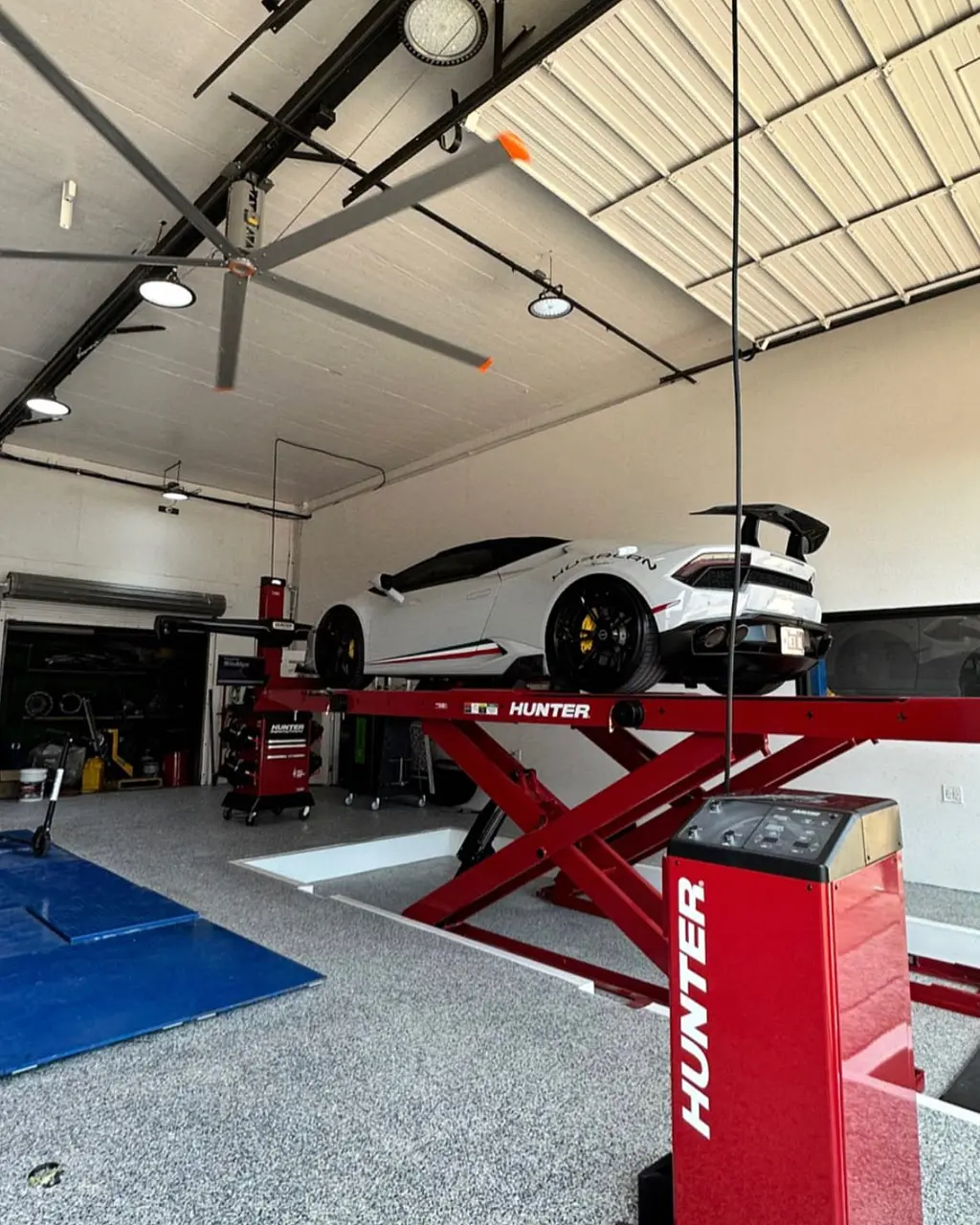Large fans are becoming increasingly popular in industrial environments, and for good reason. They provide a range of benefits that can significantly improve working conditions, efficiency, and energy savings. In this blog, we will explore the key advantages of utilizing large fans in various industrial settings.
Enhancing Air Circulation
Large fans are designed to move a significant volume of air, which greatly improves air circulation within industrial spaces. This enhanced airflow helps to regulate temperatures and maintain a more comfortable working environment.
In many industrial settings, stagnant air can lead to hot spots and discomfort. Large fans work to eliminate these areas by creating a consistent breeze, which ensures that every corner of the workspace receives adequate airflow. This not only benefits workers but can also improve the performance of machinery that may be sensitive to temperature fluctuations.
Furthermore, improved air circulation can help in reducing condensation and humidity levels. This is particularly crucial in environments where moisture can damage products or equipment. By keeping the air moving, large fans minimize the risk of dampness, leading to better overall maintenance of assets.
Ultimately, enhanced air circulation with large fans translates to a healthier work environment. Proper airflow helps to disperse any contaminants, ensuring that the air remains clean and breathable, which is essential for worker health.
Reducing Energy Costs
One major benefit of large fans is their ability to lower energy costs. By using large fans for ventilation, facilities can reduce reliance on air conditioning systems, leading to substantial savings on energy bills.
When large fans are utilized effectively, they can create a cooling effect that allows businesses to maintain comfortable temperatures without overworking HVAC systems. This efficiency not only saves money but extends the lifespan of existing air conditioning units, leading to less frequent repairs and replacements.
In addition, large fans have the ability to operate at lower power levels compared to traditional air conditioning units. As they circulate air rather than chilling it, they can achieve effective cooling with minimal energy use. This eco-friendly approach is increasingly appealing to organizations looking to reduce their carbon footprint.
By embracing large fans as a key component of their ventilation strategy, companies can enjoy a dual benefit: cost savings and a more sustainable operational model. This proactive step fosters both economic and environmental responsibility.
Improving Worker Comfort
Large fans contribute to a more comfortable atmosphere for workers by providing consistent and effective air movement. This can lead to higher productivity and improved morale, as employees are less likely to suffer from heat stress or discomfort.
Comfortable working conditions are essential for maintaining focus and efficiency. When employees feel cool and comfortable, they are more likely to stay engaged in their tasks. Large fans aid in achieving the ideal thermal comfort levels necessary for peak performance.
Moreover, the psychological benefits of a comfortable environment cannot be understated. Employees who work in well-ventilated spaces usually report higher satisfaction, which can lead to lower turnover rates and better team cohesion.
Think of large fans not just as equipment but as tools that foster a more conducive workplace. Their role in promoting comfort directly impacts worker well-being and productivity—in essence, investing in large fans is also investing in human capital.
Enhancing Safety in the Workplace
By reducing heat and humidity levels and improving air quality, large fans can help create a safer working environment. They minimize the risk of heat-related illnesses and improve visibility by dispersing airborne particles.
Safety is paramount in any industrial setting. Large fans play a vital role in ensuring workers remain safe from excessive heat, which can cause fatigue and reduce alertness. A well-circulated environment keeps stress levels down, allowing staff to focus better on their tasks.
Moreover, large fans can help mitigate dangers associated with airborne dust and fumes. By continuously circulating air, they can dilute harmful particles that might otherwise accumulate in enclosed spaces. This is especially crucial in industries like manufacturing and construction, where proper air quality is essential.
In a broader sense, improving safety isn’t just about preventing immediate hazards; it also fosters a culture of care and responsibility. Employees who work in safe environments are often more engaged and committed, paralleling improved safety with heightened productivity.
Versatility and Easy Installation
Large fans are versatile and can be installed in various industrial settings, from warehouses to manufacturing plants. Their simple installation process allows for quick setup, making them an attractive option for many businesses.
The adaptability of large fans means they can be tailored to meet the unique needs of different facilities. Whether an organization requires vertical or horizontal airflow, there’s a large fan that can fit the bill.
Additionally, since large fans usually come pre-configured, setup can often be completed in less time than traditional HVAC solutions. This minimizes downtime and allows businesses to reap the benefits of improved airflow almost immediately.
Their versatility also extends to seasonal changes. As ventilation needs shift with the seasons, large fans can easily be adjusted or repositioned to optimize airflow without significant modifications. This ensures businesses maintain comfortable working environments year-round.
Final Thoughts
In conclusion, large fans offer numerous benefits that can enhance the performance and comfort of industrial workplaces. From improving air circulation and reducing energy costs to ensuring better working conditions, their impact is undeniable. Investing in large fans can lead to a more efficient and healthier environment for everyone involved.




Leave a comment
This site is protected by hCaptcha and the hCaptcha Privacy Policy and Terms of Service apply.